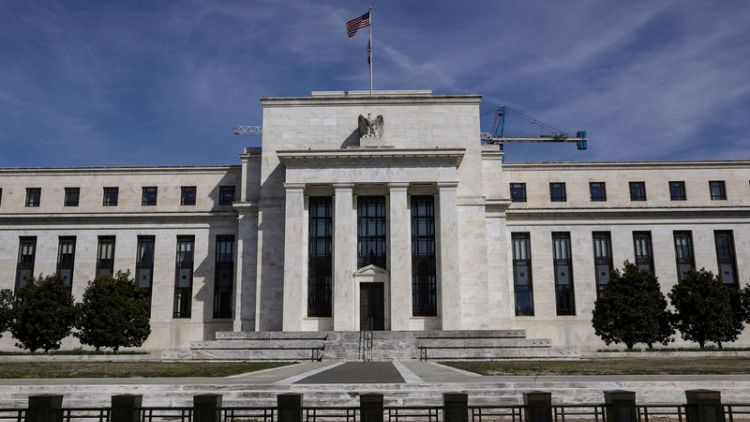By Jonnelle Marte, Richard Leong and Nichola Saminather
NEW YORK/TORONTO (Reuters) - With just two weeks to go before their next policy-setting meeting, leading Federal Reserve officials are describing the U.S. economy and what they should do about it in subtly different ways, hints that a robust debate about whether and how much to cut interest rates is underway.
John Williams, whose job running the New York Federal Reserve makes him hugely influential in rate-setting decisions, said Wednesday he is ready to "act as appropriate" to help America avoid an economic downturn, but so far the economy appeared to be in a "favorable" place. The language echoed closely that which Fed Chair Jerome Powell used last month.
"We need to consider all of the information available and be flexible in our response," Williams told a conference on securities linked to inflation, telling reporters later that he expects the economy to grow at an above-trend pace of 2.0%-2.5% in 2019 despite low business investment and trade uncertainty.
On Tuesday, Boston Fed President Eric Rosengren said that as long as the economy continues to grow at around 2%, there is no reason to cut rates.
Speaking in Toronto, Canada, just an hour after Williams, Dallas Federal Reserve Bank President Robert Kaplan called the economy "mixed," and said he was focused on whether the trade uncertainty that has weakened the U.S. manufacturing sector spills over to consumer spending, the biggest and by far the strongest part of the world's biggest economy.
"My own view is I’m going to assess the data leading right up to the meeting, and make a judgment on what the appropriate action, if any, would be for us to take," he told reporters.
Among factors he is looking at, he said, is the fact that the Fed's target range for the benchmark fed funds rate, now 2% to 2.25%, is above the yields of even the longest-dated U.S. Treasuries, setting the stage for possible distortions. On Tuesday, St. Louis Fed President James Bullard cited that disconnect as one reason he is proposing a half-percentage-point rate cut at the Fed's September meeting.
With economies slowing globally, U.S.-China trade frictions showing few signs of abating, and the looming possibility of an economically disruptive British exit from the European Union, the Fed is widely expected to lower rates at the close of its Sept. 17-18 meeting.
It would be the second rate cut this year after the Fed lowered borrowing costs in July for the first time since 2008.
Fed officials themselves seem less certain.
"I am carefully monitoring this nuanced picture and remain vigilant to act as appropriate to support continuing growth, a strong labour market, and a sustained return to 2% inflation," Williams said Wednesday.
Kaplan for his part said he has already lowered his growth outlook for the year and could do so again. Fed officials will submit fresh economic forecasts and views on appropriate rates just ahead of their Sept. 17-18 meeting.
"Will some of the global growth deceleration, manufacturing weakness transmit to other parts of the economy?" Kaplan said he is asking himself. "That’s what I’m watching very carefully."
(This story corrects to say the fed funds rate is above, not below, the yields on the longest-dated U.S. Treasuries in paragraph 7)
(Reporting by Jonnelle Marte and Richard Leong; Editing by Chizu Nomiyama and Lisa Shumaker)



